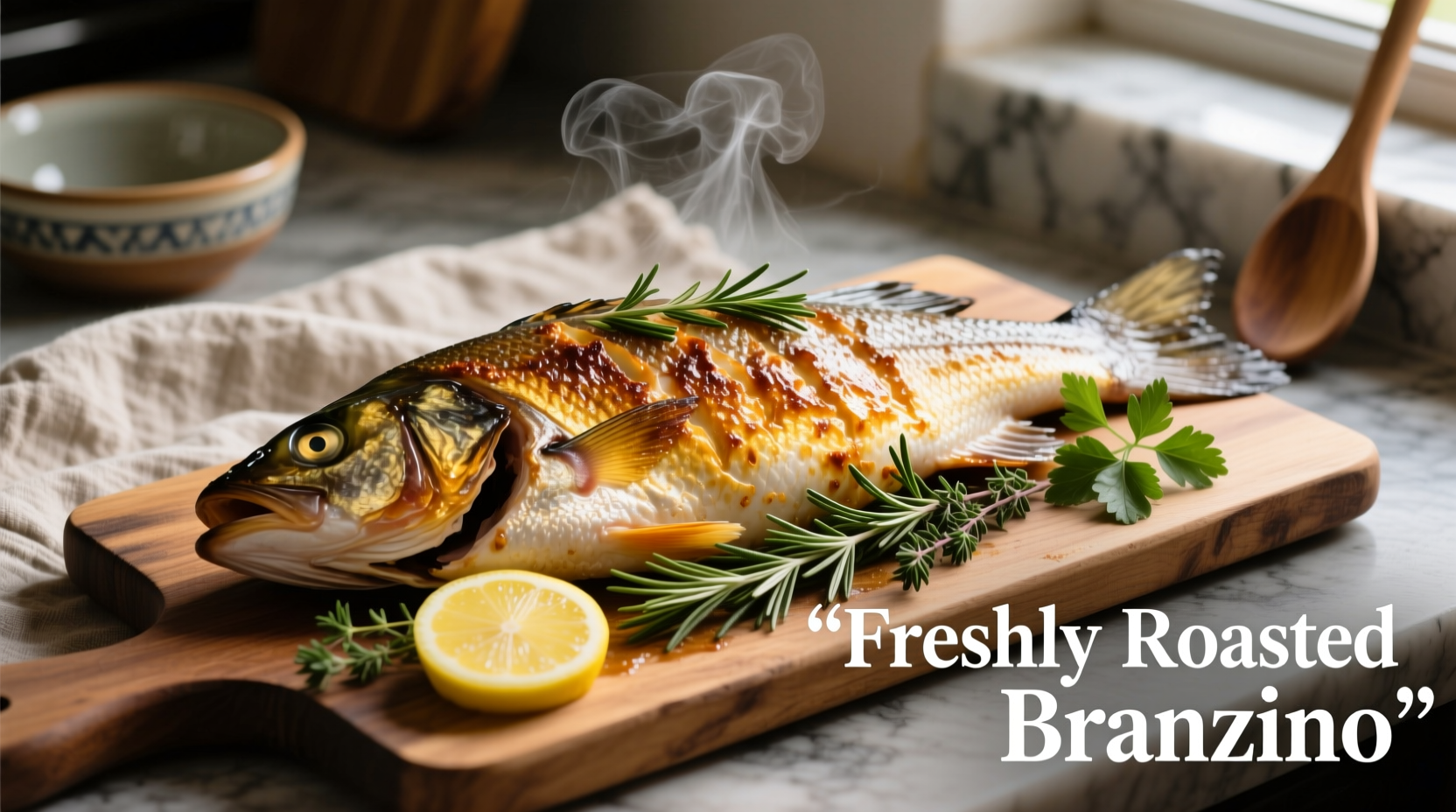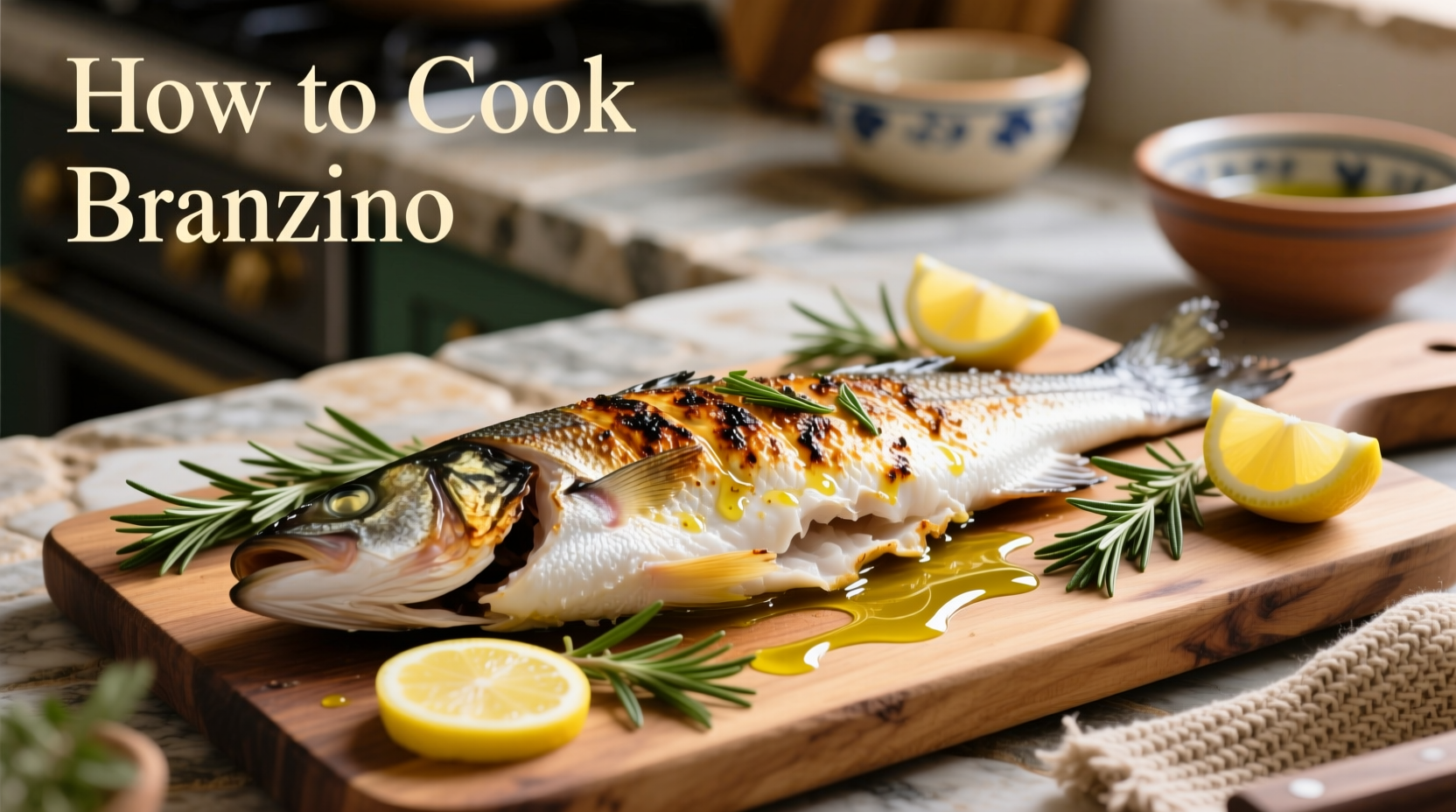Branzino, also known as European sea bass, has become a favorite among home cooks and professional chefs alike for its delicate flavor and firm, flaky texture. This versatile fish responds beautifully to multiple cooking methods while maintaining its subtle sweetness. Follow this comprehensive guide to master branzino preparation with confidence.
What Makes Branzino Special
Branzino (Dicentrarchus labrax) thrives in the Mediterranean Sea and Atlantic coasts of Europe. Unlike stronger-flavored fish like mackerel, branzino offers a mild, slightly sweet profile that pairs well with citrus, herbs, and olive oil. The U.S. Food and Drug Administration recommends cooking fish to an internal temperature of 145°F (63°C) or until the flesh appears opaque and flakes easily with a fork—a perfect guideline for branzino.
| Cooking Method | Prep Time | Cook Time | Best For |
|---|---|---|---|
| Whole Roasted | 10 minutes | 15-18 minutes | Impressive presentation |
| Pan-Seared Fillets | 5 minutes | 6-8 minutes | Quick weeknight meals |
| Grilled Whole | 15 minutes | 12-15 minutes | Summer entertaining |
| Steamed | 8 minutes | 10-12 minutes | Delicate flavor preservation |
Essential Preparation Steps
Proper preparation makes the difference between good and exceptional branzino. When selecting your fish, look for clear eyes, bright red gills, and firm flesh that springs back when pressed. Most fishmongers will clean and scale branzino upon request—specify if you want it left whole or filleted.
Drying the surface is critical for achieving perfect searing. Pat the fish thoroughly with paper towels and let it sit uncovered in the refrigerator for 30-60 minutes before cooking. This simple step creates the ideal surface for caramelization. Season generously with kosher salt about 20 minutes before cooking to enhance flavor penetration without drying the flesh.
Step-by-Step Roasting Method (Recommended)
Roasting whole branzino in the oven delivers restaurant-quality results with minimal effort. Preheat your oven to 425°F (220°C) and position the rack in the upper third.
- Prepare a bed of lemon slices, fresh herbs (rosemary, thyme, or dill), and shallots in a roasting pan
- Stuff the cavity with additional lemon wedges, garlic cloves, and herbs
- Score the skin diagonally on both sides to ensure even cooking
- Rub the entire fish with extra virgin olive oil and season inside and out
- Roast for 15-18 minutes until the internal temperature reaches 145°F
- Rest for 5 minutes before serving
The Mediterranean Diet Foundation notes that traditional Mediterranean preparation emphasizes simple techniques that highlight the fish's natural flavor rather than overwhelming it. This approach aligns perfectly with branzino's delicate profile.

Avoiding Common Cooking Mistakes
Home cooks frequently encounter these branzino pitfalls:
- Overcooking - Fish continues cooking after removal from heat. Remove at 140°F for carryover cooking to 145°F
- Insufficient seasoning - Underseasoned fish tastes bland. Don't be shy with salt on the skin side
- Moving too soon - When pan-searing, wait until the fish releases naturally from the pan
- Skipping resting time - Allows juices to redistribute for moist results
Serving Suggestions and Pairings
Traditional Mediterranean accompaniments enhance branzino's natural flavors without overpowering them. Serve with:
- Citrus-dressed arugula salad with shaved fennel
- Lemon-herb roasted potatoes
- Tomato and olive tapenade
- Crusty bread for soaking up juices
For wine pairings, choose a crisp white like Vermentino or Assyrtiko that complements rather than competes with the fish. The Monterey Bay Aquarium's Seafood Watch program recommends verifying branzino's sustainability status, as farming practices vary significantly by region.
When to Choose Alternative Cooking Methods
While roasting delivers excellent results, different situations call for alternative approaches:
- Pan-searing works best for fillets when you need a quick meal (6-8 minutes total)
- Grilling adds smoky notes but requires careful temperature control to prevent sticking
- Steaming preserves maximum moisture but lacks browning for those preferring crispy skin
Professional chefs often use the en papillote (parchment packet) method for individual portions, which traps moisture while infusing flavors. This technique works particularly well when cooking for guests with different doneness preferences.











 浙公网安备
33010002000092号
浙公网安备
33010002000092号 浙B2-20120091-4
浙B2-20120091-4